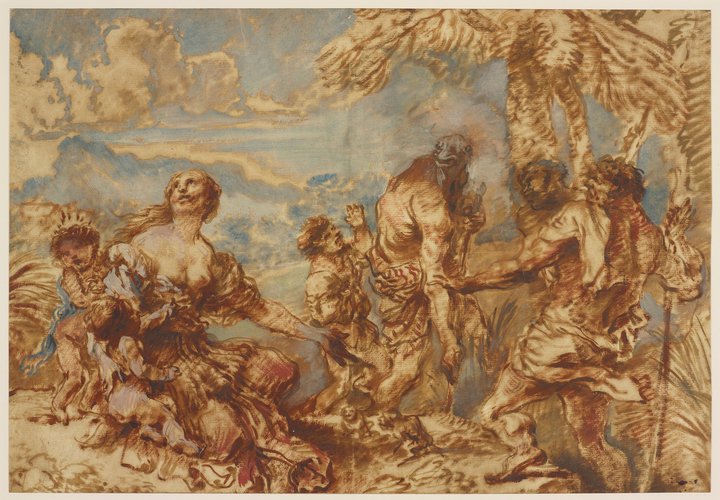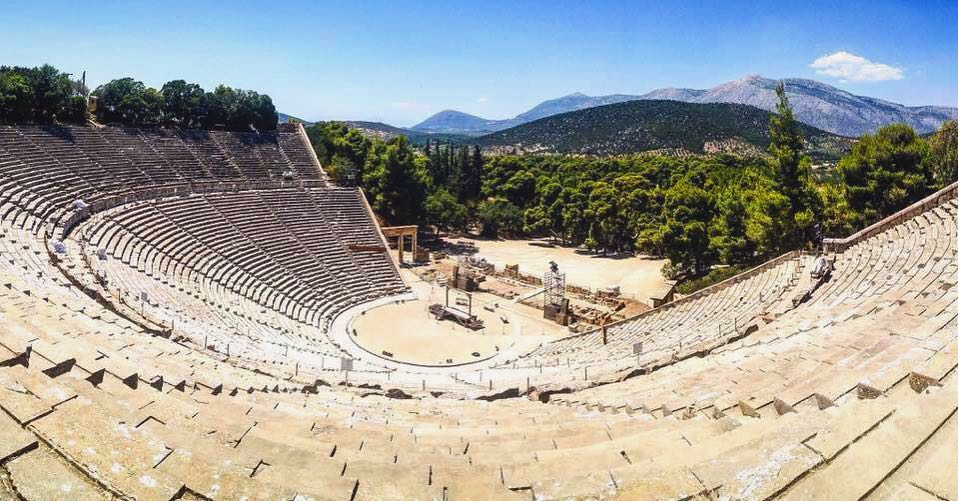Elke Close
Mythological stories and figures influenced the daily life of the ancient Greeks in different ways. They were at the heart of Greek religion, taught valuable life lessons to young and old and provided an explanation for unusual natural phenomena. Greek mythology was thus very much a part of the Greek identity. It is therefore not surprising that this connection was used by many poleis in the expression of their regional identity. Naturally, the history of any city in the Mediterranean starts with its foundation by a legendary king or hero. But it did not stop there.
In 205 B.C. the walls of the polis Kytinion had been completely destroyed. This was a small city in Doris, the region in ancient Greece that was seen as the native region of the Dorians. As they did not manage to repair the wall themselves, the inhabitants decided to ask for help. Of course, the best way get this help was to send out envoys to all of the poleis that, just like them, descended from the Dorians. Because of this kinship, the other poleis would certainly be inclined to help them.
The Lykian city of Xanthos was among those that received a Kytinian envoy which demonstrated the kinship between the two cities by referring to their common ancestors. What’s more, the Xanhian were apparently indebted to Kytinion for the long-lost deeds of some mythological hero. What better way to repay this debt than by helping to build a new city wall? (See Bousquet, 1988 for more)
The Kytinian appeal is a typical example of the way in which their mythological past was used by Greek poleis in political, economic, social or cultural relations. This so-called kinship claim between different cities was a regular feature of diplomatic relations between the independent Greek cities, individuals and kings during the Classical and Hellenistic periods. Ambassadors or envoys were often on their way from one Greek city to another to carry out diplomatic missions such as these. This is also evident from the various cases in the historical sources which we will be examining in the coming months.
But how exactly did such a process work? First of all, the city in need of something sent out an envoy to various city-states. Of course, it had to be decided beforehand which cities were potential candidates and thorough research was done into the mythological relationships that could be called upon. Each allegation also had to be backed up by sufficient evidence. The envoys then left with decrees supporting their mission, presented the case to the city in question in their speeches and, after enjoying the necessary hospitality, moved on to the next one. The results of these missions were often recorded in inscriptions and so they form a large part of the sources for the subject of this series.
The evidence used to prove mythological kinship between different parties also appears to be extremely detailed. If we return for a moment to the story of Kytinion, this becomes very clear. In one part of the epigraphic text we find the following description:
The kinship claim does not end here but it gives us a clear indication of how seriously the argument of mythological affiliation must be take, at least in the case of Kytinion. After all, to us it may seem like a strange idea to support an argument with things that one knows for sure did not really happen. In antiquity, however, people seemed to have less of a problem with this. Of course, it does not mean that the ancient Greeks believed these stories and mythological characters really existed. So then why were they used in Greek diplomatic relations?
Initially, diplomacy was used to persuade others. Indeed, a link of kinship was only mentioned when one party wanted to obtain something from another. The idea was that if some kind of relationship was established between the two parties, it would then be much harder to refuse requests for help. A shared past could also make approaching strangers easier, because now there already was a framework in place which this could be done: because of their common ancestry they were no longer strangers to each other. (Erskine, 110). Mythological kinship ties were in some cases also used by cities or individuals to emphasise their Greek identity or their divine character. Alexander the Great, for example, invoked the kinship myth to connect the different peoples in his great empire with himself during his military conquests. After all, it proved to be a good alternative to military conquest. (Patteron, 84).
Whatever the reason may have been for an individual or group to use their mythological past, it is clear that this was done a lot in antiquity. In this series, we will take a closer look at the various ways in which this was done and look at unfamiliar and interesting cases in order to hopefully better understand why the link between myth and identity was so popular among the Greeks as a diplomatic tool.
Bibliography
Bousquet, J., ‘La stèle des Kyténiens à Xanthos de Lycie’, Revue des Études Grecques, 1988, 12-53.
Erksine, A. ‘O Brother Where are thou? Tales of Kinship and Diplomacy’, Ogden, D., ed., The Hellenistic World: New Perspectives, 2002, p. 97-115.
Gruen, E. Rethinking the other in Antiquity, 2010.
Jones, C. Kinship Diplomacy in the Ancient World, 1999.
Mosley, D. J., Envoys and Diplomacy in Ancient Greece, 1973
Patterson, Lee E.. Kinship Myth in Ancient Greece, 2010.
(c) The header image shows “Latona (Leto) and the Peasants” (1660-1700) by a student of Giovanni Benedetto Castiglione (1609-64) owned by The Royal Collection Trust.





